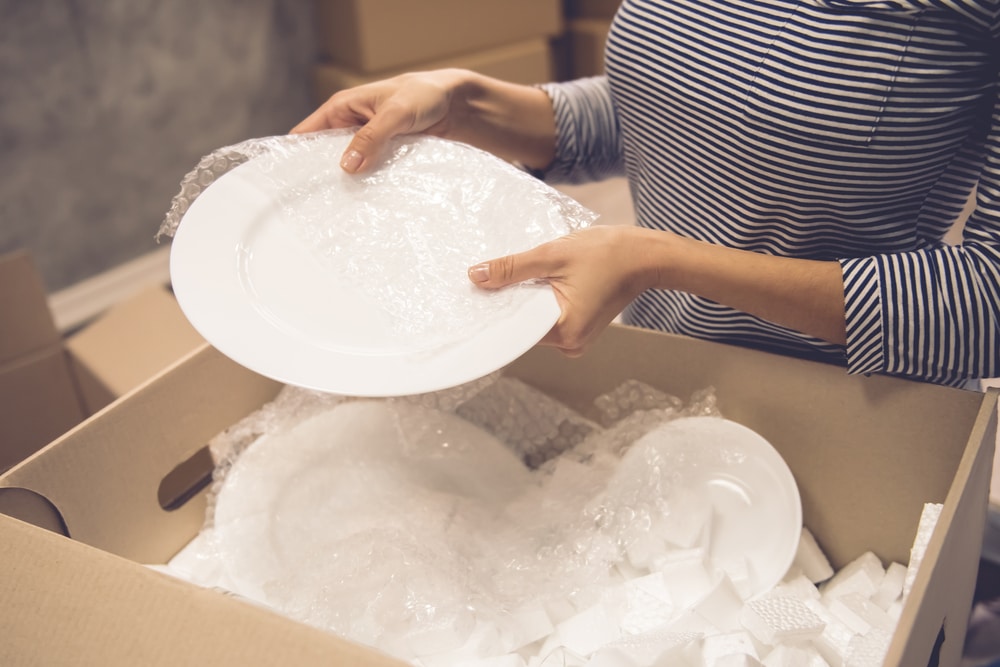While most of the items we need to pack for a given move will be straightforward enough and won’t require much additional thought, there are a few exception areas where you may have to include a bit more nuance. One great example here is the realm of dishes, which can include everything from typical plates and silverware to glasses, platters, pots, pans and more.
At Tru Solutions Moving, we’re happy to offer a variety of residential moving services to clients around Salt Lake City, assisting with everything from standard items to specialty needs – and everything in between. We’ve helped numerous clients with packing various kinds of items, including every variety of dish or related kitchen item you can think of. Here are some basics on how to pack various categories of item within this area.
Having the Proper Materials on Hand
While some of the materials you’ll need for packing dishes and kitchen items will be the same as those you’d use for general packing, there are a few specialized items that you may need to keep on hand. Be sure to have plenty of bubble wrap on hand – it’s great for cushioning delicate items such as glassware and fine china.
Additionally, consider investing in foam plates and packing paper designed specifically for this kind of item; these are great for providing extra cushioning and support, especially when stacking items. Labels can also be helpful; it’s a good idea to label the boxes on the tops and sides so that you’ll be able to easily identify what is inside each one.
Packing Typical Dishes
When it comes to standard dish types like plates, mugs, and glasses, the best plan is to wrap each individual item in bubble wrap before packing it into a box. Be sure to pack like items together, making the process easier by filling the box with one type of item at a time. Label all boxes clearly and add “Fragile” stickers as needed.
Generally speaking, it’s best to place items in a row-by-row pattern, starting with the bottom of the box and filling each row up before adding a new one. You can also place smaller items within larger ones for extra support – just be sure to add plenty of bubble wrap between them to ensure they don’t rub together.
Packing Wine Glasses
One specialty item that often requires a bit of special consideration is wine glasses. Place each glass individually in bubble wrap and then stack them – but be sure to place the stems facing up, as this will help avoid breakage. If possible, fill any empty spaces with extra paper or bubble wrap for additional cushioning and support.
In some cases, particularly if your wine glasses are especially high-value, you might consider double-boxing them for extra protection. This means placing the glasses in their own box, wrapping it with bubble wrap and packing tape, and then putting that box into a larger one before adding any other items.
Packing Kitchen Items
When it comes to pots, pans, bowls and other kitchen utensils, you’ll want to be sure to pad the bottom of the box with extra paper or bubble wrap before adding any items. You’ll also want to choose a box that’s large enough for everything you’re packing – and don’t forget about all those lids!
Utensils should be packed together in rows, just like plates; for heavier items, such as cast iron cookware, consider packing them separately in their own box. Be sure to wrap each item individually, and fill any extra spaces with packing paper or bubble wrap for extra support and cushioning.
Another important consideration for these larger items is weight: be sure not to exceed the weight limits listed on your boxes. Also, when packing heavier items, it’s best to place them at the bottom of the box and keep lighter items on top.
Tupperware and Plastic
One slightly easier area when it comes to packing kitchen items is Tupperware and other plastic containers. Generally speaking, these can just be packed together in a box – but you’ll still want to add extra cushioning by placing bubble wrap around them or filling the bottom of the box with packing paper.
You may also want to consider wrapping lids separately for extra protection. This can help ensure that they don’t get scratched or cracked during the move, and it also makes it easier to find them once you unpack at your new home.
With the right approach, packing up your dishes and other kitchen items can be surprisingly easy. Be sure to use plenty of bubble wrap, packing paper and tape – and don’t forget to label all of your boxes so you know exactly what’s inside them! This will help ensure that everything stays safe and sound during the move, allowing you to quickly unpack when it’s time.
For more here, or to learn about any of our residential or commercial moving services in SLC, speak to our team at Tru Solutions Moving today.


